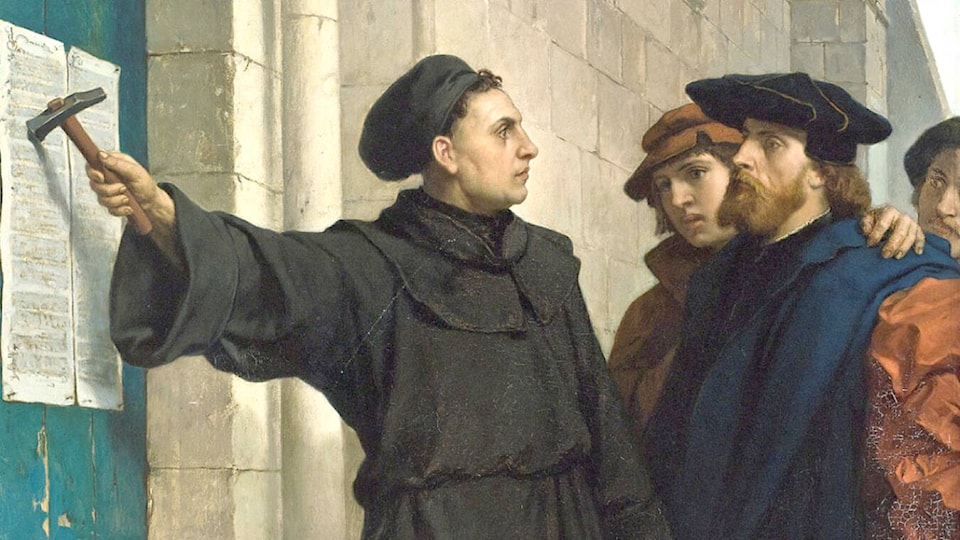Yme Woensdregt
Question: How many Anglicans does it take to change a light bulb?
Answer: Change? Whaddaya mean change? My grandmother donated that light bulb!!
It’s an old joke, and it points to a deep unwillingness in church circles to face change. But change is inevitable and necessary if the church is to survive.
The latest census data shows that there are more “nones and dones”—those who have no religious affiliation and those who have left their churches. The 2021 Canadian census reports that in 2019, 68% of Canadians reported having any religious affiliation, a drop of 10–15% in the last 20 years.
Alongside these declining numbers, the pandemic is a second factor which will lead to a massive change. If churches don’t re–evaluate what they are doing, it is clear that a more precipitous decline awaits the church in the very near future.
It points to what Phyllis Tickle wrote in a 2008 book called “The Great Emergence.” She wrote that every 500 years or so, the Christian church has gone through a major upheaval which caused a new way of thinking about how it lives and speaks in the world. She suggested that we are currently going through another such upheaval. She used the charming image of the church holding a giant rummage sale every 500 years. She described four such rummage sales.
Around 500 AD, Germanic and Frankish tribes moved south, conquering Rome and wiping out its underlying religion. Christianity met the challenge by going underground. In abbeys and cloisters, monks painstakingly copied Scripture and civilization’s great writings. They ended up saving Western civilization itself.
Around 1000 AD came the “Great Schism.” The Western church based in Rome and the Eastern church based in Constantinople fought over creeds and doctrines as well as political power. The result was a split which endures to this day between Eastern Orthodoxy and Roman Catholicism.
Around 1500 AD came the Protestant Reformation. New discoveries and exploration led to a new nationalism and new wealth, which led to a decline in the church’s domination of European life. As a result, the church split into five different groups: the continuing Roman Catholic and Eastern Orthodox churches; the Lutheran group of churches, led by Martin Luther and others; the Reformed and Presbyterian group of churches led by John Calvin and others; and the Anabaptist wing, which includes modern–day Baptist, Mennonite, Pentecostal and other such “holiness” churches.
Ever since, the church seems to have gotten into the habit of splitting. Today, Christianity wears so many different faces that it’s difficult to speak of a single “Christian movement.” There are an estimated 45,000 Christian denominations globally, with a vast chasm between Western Christianity and the booming churches of Africa, Asia, and Latin America. The church in Europe has virtually collapsed, and the church in North America is experiencing a relentless decline, witnessed by increasing numbers of “nones and dones.”
What’s to be done?
Conservative Christians end up blaming outside forces such as “secular humanists” and atheists for their determined assault. They seek a solution in which the surrounding culture returns to its supposedly Christian roots.
More progressive churches, on the other hand, are searching for a way to be more relevant as they reach out to the wider culture. But the problem is that its infrastructure is collapsing too quickly, and many are aging too rapidly.
Neither of these two answers— a stubborn clinging to old ideas that explain too little and an openness to new ideas that promise too much—will help. In this current “rummage sale,” the church is still only figuring out what we need to jettison. We can’t yet see a clear way forward.
But a few things are starting to become clear.
First, Christians of all stripes are beginning to question more freely. Roman Catholics are struggling to discover what relevance Rome and the pope hold for their faith needs. Mainline Christians are moving beyond what one commentator has called “the captivity of white, middle–class, property–owning, optimistic serenity.” Conservative Christians are discovering that believing the right things leads nowhere and that a combative countercultural stance merely makes them seem angry and judgmental. Not all; but some.
Secondly, Christians are slowly learning that the church is no longer at the centre of cultural dialogue. Christian leaders no longer command broad respect. Church buildings no longer draw people in simply by being there.
Thirdly, many groups can no longer afford to maintain their large church buildings. The financial drain is too great for declining congregations.
There are some hopeful signs. More people are seeking authentic Christian community by moving out of those large buildings where they can remain anonymous and into small home–based groups where they are encouraged and supported in their journey.
Others are beginning to find their own pathways to God, their own languages for accessing God, their own ideas about life’s purpose, and their own forms of faith community.
More people are looking beyond themselves as they ask about the essential mission of the church. What does it mean to serve? What does it look like to love your neighbour? How might we live together as we welcome all people? How might we be beacons of the love and grace which are at the heart of Jesus’ life and message?
In this time of change, some churches will try to circle the wagons and hold on for dear life. They will die.
Those who look outward and are moved to compassion will be signs of life and beacons of light in a society which is lost in dysfunction. These new, smaller faith communities are being brought to their knees by changes beyond their control. They will land in exactly the right posture: to confess, submit, pray, and serve.
Yme Woensdregt is a retired Anglican priest living in Cranbrook
